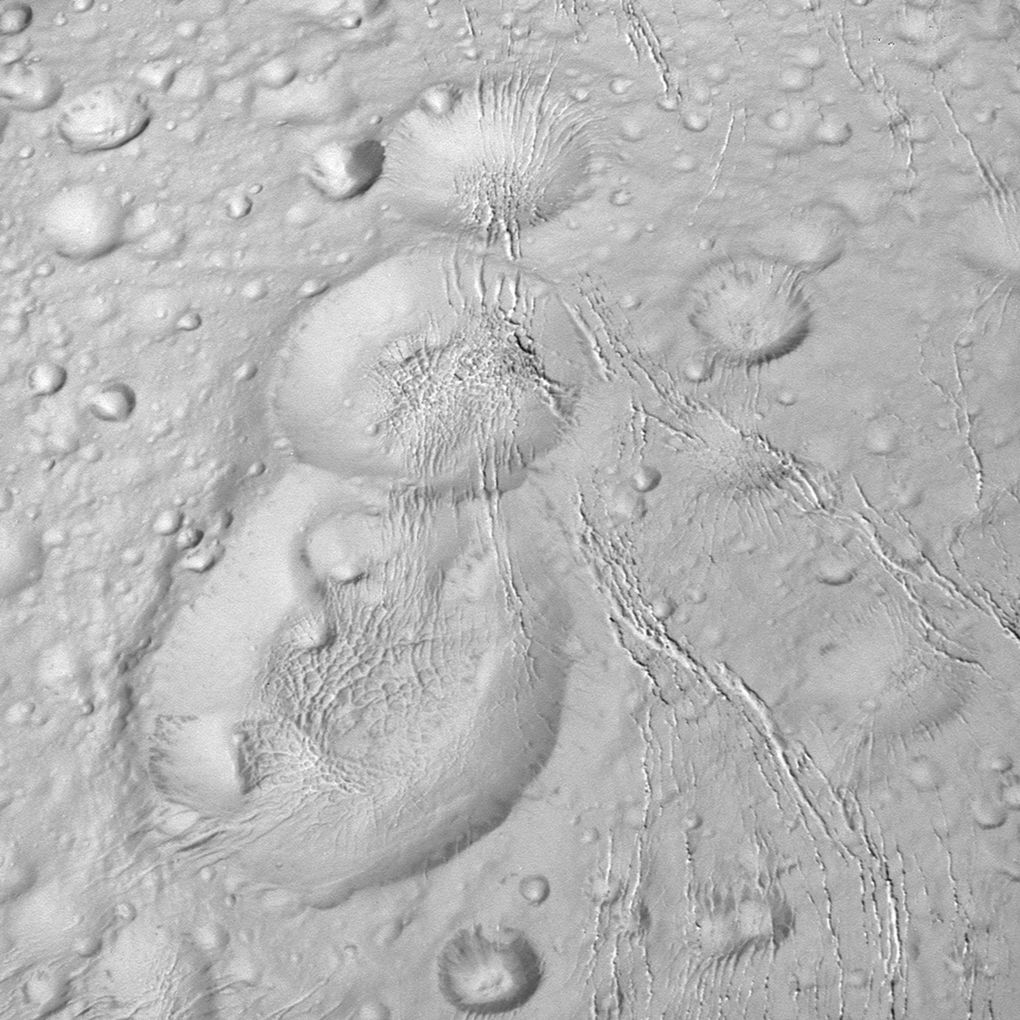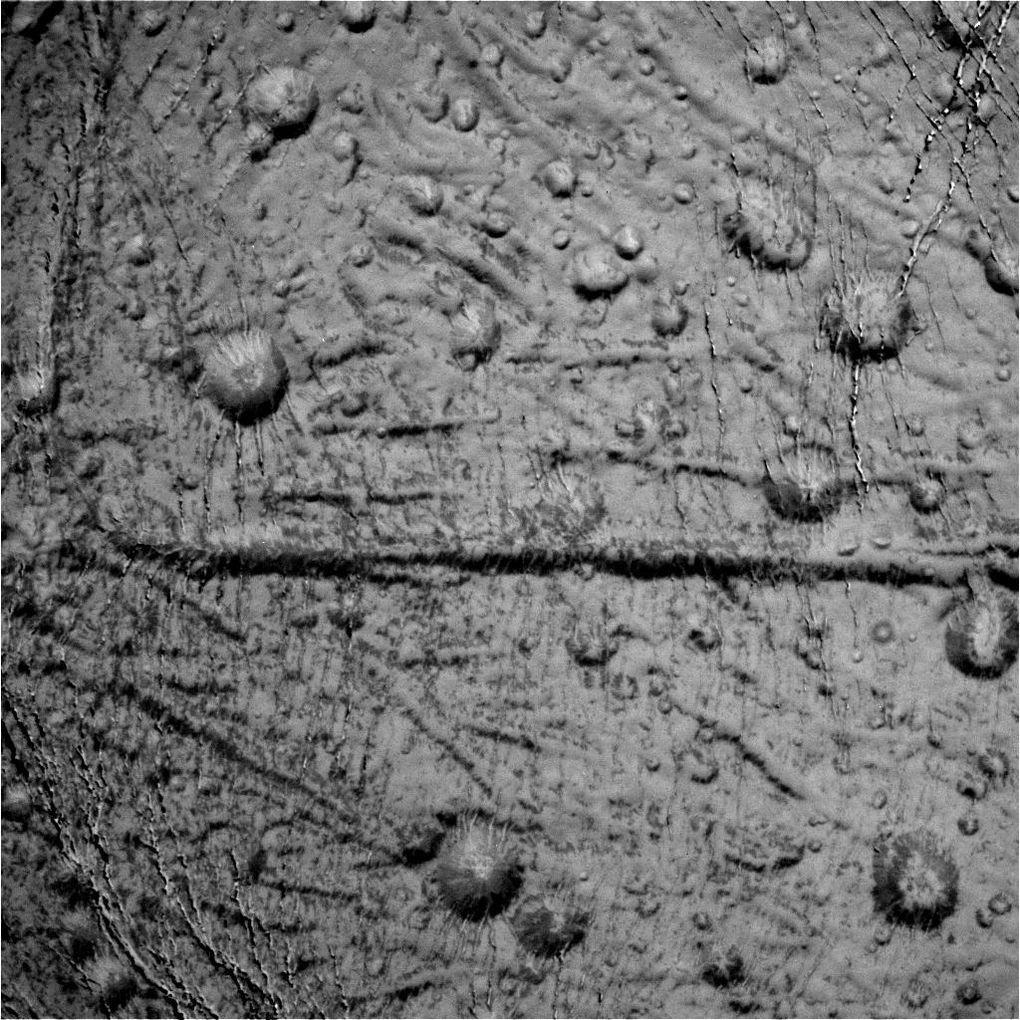Strict Standards: Only variables should be assigned by reference in /home/noahjames7/public_html/modules/mod_flexi_customcode/tmpl/default.php on line 24
Strict Standards: Non-static method modFlexiCustomCode::parsePHPviaFile() should not be called statically in /home/noahjames7/public_html/modules/mod_flexi_customcode/tmpl/default.php on line 54
Strict Standards: Only variables should be assigned by reference in /home/noahjames7/public_html/components/com_grid/GridBuilder.php on line 29
For many years, Cassini’s north pole has been covered in shadow
For many years, Cassini’s north pole has been covered in shadow, making it hard to see with the spacecraft's instruments. But now, the summer sun is shining on the northern hemisphere, allowing Cassini's cameras to get a good view. The pictures show the area to be filled with thin cracks that slice through a variety of craters.
Researchers have known since 2005 that icy plumes erupt from underneath the surface of Enceladus, and recently, NASA confirmed that the moon has a vast ocean underneath its icy crust. It's possible that hydrothermal activity is occurring on the seafloor of this ocean, which could give rise to life. Getting close-up views like these will help NASA scientists understand how the geology of Enceladus evolves over time. The features of the moon’s surface can provide details about what’s going on underneath the crust.
This flyby was only the opening act for Cassini, though. The real excitement will occur on October 28th, when the spacecraft will come within 30 miles of the southern pole of Enceladus. Cassini will pass through some of the icy plumes that have been observed on the moon, collecting data about what lies in the ocean underneath. This will tell NASA more about the subsurface ocean's chemistry and whether or not the area could be habitable. Cassini can’t determine if life exists underneath the moon, but the probe is designed to tell researchers if Enceladus’ water is a place where microbes could thrive.
Cassini's final flyby of Enceladus will be on December 19th. The probe will come within 3,106 miles of the moon and measure the temperature of its core.
Hint: Use the 's' and 'd' keys to navigate




Read more http://www.theverge.com/2015/10/17/9556155/nasa-saturn-photos-enceladus-cassini-probe
Strict Standards: Only variables should be assigned by reference in /home/noahjames7/public_html/modules/mod_flexi_customcode/tmpl/default.php on line 24
Strict Standards: Non-static method modFlexiCustomCode::parsePHPviaFile() should not be called statically in /home/noahjames7/public_html/modules/mod_flexi_customcode/tmpl/default.php on line 54
Find out more by searching for it!
